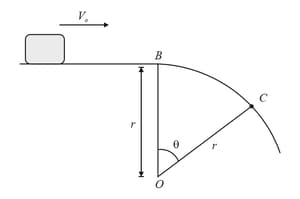K K Sharma Solutions for Chapter: Circular Motion, Exercise 1: TOPICWISE QUESTIONS
K K Sharma Physics Solutions for Exercise - K K Sharma Solutions for Chapter: Circular Motion, Exercise 1: TOPICWISE QUESTIONS
Attempt the practice questions on Chapter 8: Circular Motion, Exercise 1: TOPICWISE QUESTIONS with hints and solutions to strengthen your understanding. Chapterwise/Topicwise Daily Practice Problems (DPP) Mechanics I NEET solutions are prepared by Experienced Embibe Experts.
Questions from K K Sharma Solutions for Chapter: Circular Motion, Exercise 1: TOPICWISE QUESTIONS with Hints & Solutions
A block of mass slides down along the surface of the bowl from the rim to the bottom as shown in the figure. The velocity of the block at the bottom will be
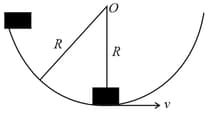
A mass is revolving in a vertical circle at the end of a string of length . By how much does the tension of the string at the lowest point exceed the tension at the topmost point? (Assume that the mass has speed at its lowest point such that it is just able to complete the vertical circle)
A particle initially at rest starts moving from point on the surface of a fixed smooth hemisphere of radius , as shown. The particle loses its contact with the hemisphere at point . is the centre of the hemisphere. The equation relating and is
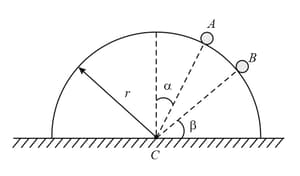
A block follows the path as shown in the figure, from height If radius of the circular path is then the relation which holds good to complete the full circle is
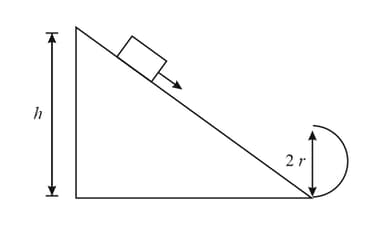
A particle of mass , attached to the end of a string of length , is released from the initial position , as shown in the figure. The particle moves in a vertical circular path When it is vertically below the string makes contact with nail placed directly below at a distance and rotates around it. If the particle just completes the vertical circle about then
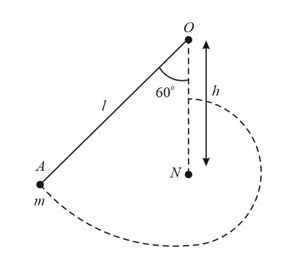
A particle suspended from a fixed point by a light inextensible thread of length , is projected horizontally from its lowest position with velocity . The thread will slack after swinging through an angle , such that equals
A particle is kept at rest at the top of a sphere of diameter . When disturbed slightly, it slides down. At what height from the bottom, will the particle leave the sphere?
A small block slides with velocity on a horizontal frictionless surface, as shown in the figure. The block leaves the surface at point . The angle in the figure is:
